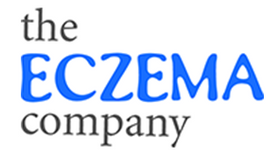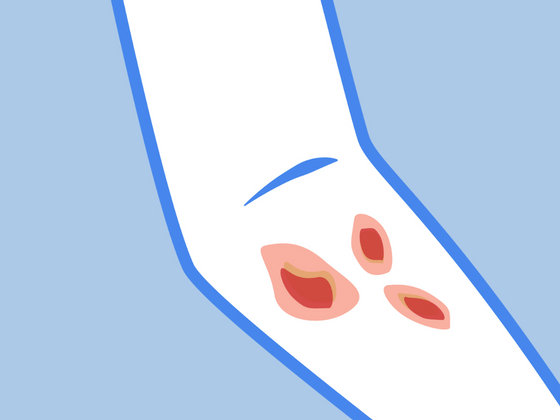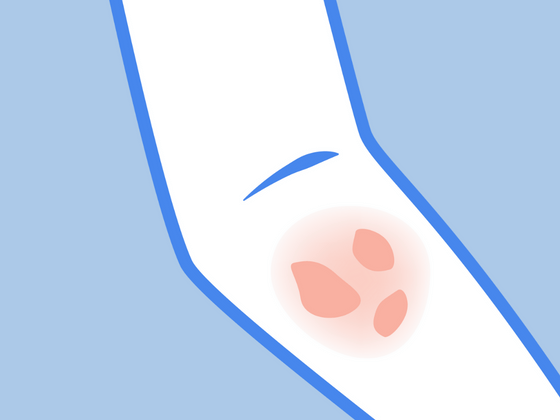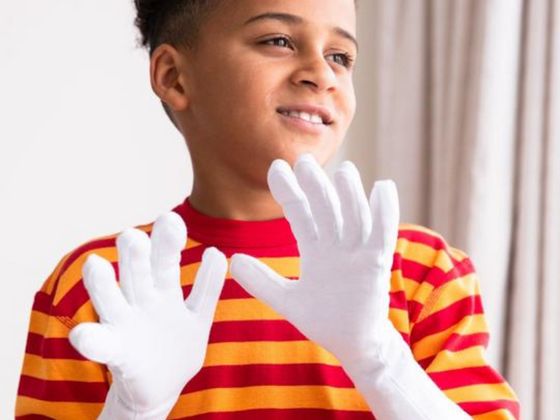Most babies drool, especially when their teeth are starting to come in. But is the excessive saliva irritating your baby’s skin and causing a drool rash? In this post, we’ll talk about how to treat a drool rash and prevent new ones from forming. In addition, we’ll help you differentiate between an eczema vs drool rash.
Please keep in mind that although what we discuss in this post can relieve eczema, we are in no way medical professionals. If you’re experiencing severe eczema symptoms like an infection, it is best to seek medical advice immediately.
What is a Drool Rash?
A drool rash develops from the constant presence of saliva on your baby’s skin. For this reason, it typically appears around the mouth and cheeks, in the folds of the neck, or on their chest. While a baby drool rash is not contagious, it can be very uncomfortable for your baby.
Causes of Drool Rash
There are a few possible reasons why a drool rash develops. As mentioned earlier, teething is a common culprit. Using a pacifier is another potential cause as sucking on a pacifier can cause saliva to drip from your baby’s mouth. Finally, smeared food left on the face for too long can also contribute to a drool rash. Bear in mind that babies have delicate skin making them extra sensitive to rashes like baby acne and baby eczema.
Drool Rash vs Eczema: Symptoms
A drool rash typically leads to red, itchy and bumpy patches on the skin. Because of this, it looks strikingly similar in appearance to eczema. These patches of red skin can be moist or dry and are often uncomfortable or even painful. You will notice these flat or slightly raised patches on the mouth, cheeks, neck folds, and chest. While eczema is a chronic condition, drool rash will likely go away when your baby is between 15 and 18 months old.
How To Treat and Prevent Baby Drool Rash
Fortunately, there are ways to prevent and treat your baby’s drool rash to make them more comfortable. Check out our top tips for happier baby skin below:
Clean the Affected Area
It’s recommended to clean your baby’s affected area twice a day. Use warm water and gently pat dry with a towel. Your baby’s skin is delicate and sensitive and rubbing it can further irritate it. Make sure the skin is completely dry.
Apply a Natural Cream
Once the area is clean and dry, we suggest applying a soothing cream like this Organic Manuka Skin Soothing Cream. With a non-burning, non-stinging formula, you can rest assured that it’s gentle enough for your baby’s skin. Made with just six natural ingredients - including Manuka honey - this soft oil-based balm restores moisture to your little one’s skin like a dream.
Use a Gentle Wash
When bathing your baby, be sure to use a mild, unscented soap such as this Grass Fed Tallow Soap. Made with just lye, water and grass fed tallow, it’s super moisturizing without irritating sensitive skin.
Avoid Irritating Substances
When dealing with delicate baby skin, it’s best to avoid any substances that contain harsh ingredients or chemicals. These include laundry detergents, lotions, and soaps. We recommend replacing these products with their fragrance-free alternatives like some of the products mentioned above.
Keep Affected Area Dry
Your baby is likely going to naturally drool but to minimize the rash, keep your baby’s face and clothing as dry as possible. Change your baby’s clothes when it becomes too wet and be sure to gently clean your little one’s face after eating. This will help remove drool and prevent a rash from forming.
References:
https://www.medicalnewstoday.com/articles/324234
https://www.healthline.com/health/parenting/drool-rash
https://www.mustelausa.com/blogs/mustela-mag/drool-rash-causes-symptoms-treatment-and-prevention
https://www.medicalnewstoday.com/articles/322949
------------------

Bio: Laura is a contributor and content developer for The Eczema Company. She is in no way a medical professional. Her comments, suggestions, and reflections are not intended to replace any medical advice. Always seek the help of a medical professional before undertaking any diet or lifestyle changes.








